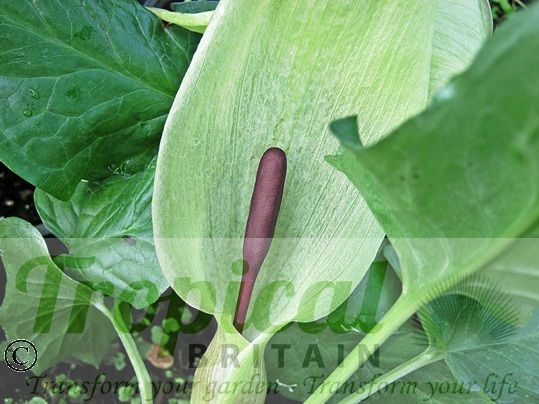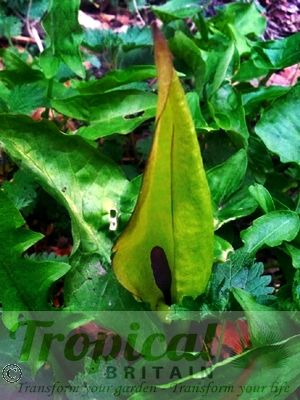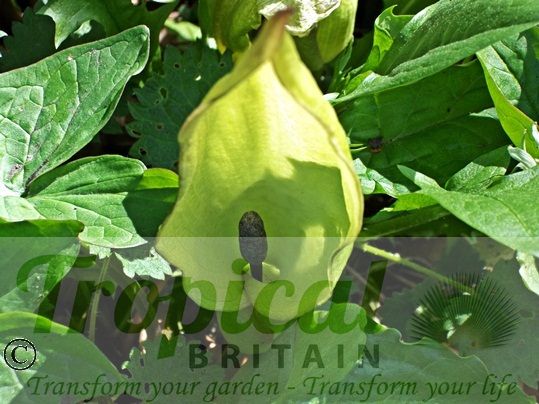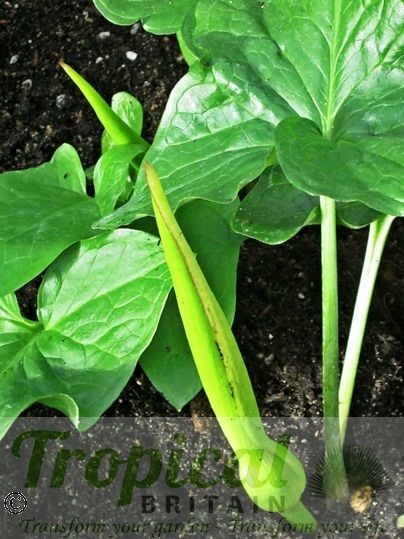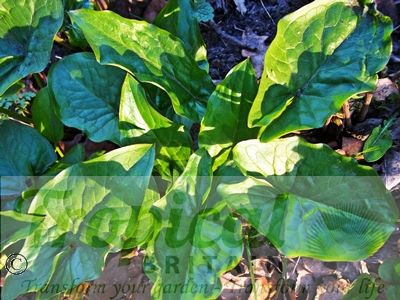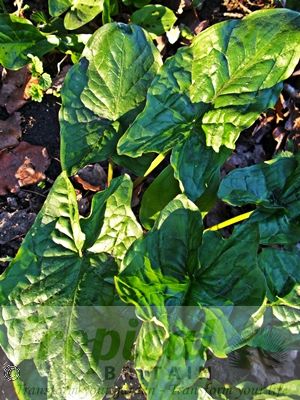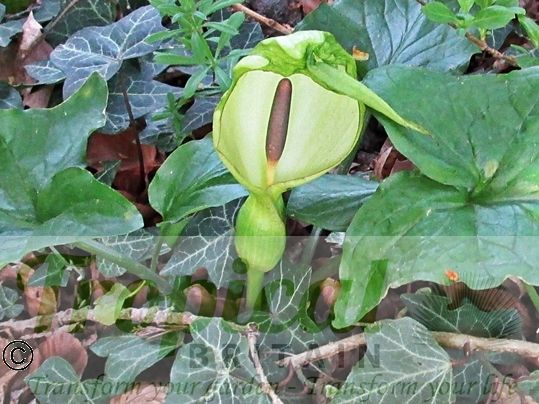Arum maculatum
Arum maculatum, the Cuckoo Pint, is native to Northern Europe and the UK where it grows as far as 56° N, making it the most northerly growing of the Arum genus. Commonly found in woodlands, beech forest, hedgerows and embankments, it is one of only two native aroids in the UK, the other being Arum italicum. Dormant during the winter, its growth is rapid during the early spring and the sudden appearance of its lush foliage is quickly followed by the characteristic aroid shape of the inflorescence with its pale greenish spathe and dark purple spadix. It forms an intergral part of the folklore of the British Isles and it is not difficult to see why, in centuries past, the Medieval mind associated this humble yet fascinating plant with the human genitalia and the quickening of spirits that accompanied Spring and the celebration of Beltane, the coming of May. Most of the common names associated with Arum maculatum - and there are far too many to list them all - have their origins in this rich earthy vein of visual humour: Cuckoo Pint, Lords and Ladies, Devils and Angels, Cows and Bulls, Dog's Dibble, Adam and Eve, Priest's Pintle, Sweethearts, Bobbins, Naked Boys... the list goes on; all symbolic of erotic ardour.
In April, when the inflorescence is ready, it emits - both from the spadix and the spathe-chamber - a dung-like odour containing as many as 56 different chemical compounds that attracts the females of the fly, Psychoda phalaenoides. Entering the funnel-shaped structure at the base of the spathe, the flies feed on droplets of nectar but find themselves unable to get out, their exit barred by hair-like sterile flowers at the top of the spathe-tube. The male flowers release their pollen on to the midge-like flies and they in turn pollinate the female flowers and are able to escape only after the hair-like flowers have withered.
The fruits that follow in June start green before turning a bright orange-red. Thomas Hardy, in his evocation of an early June day in Dorset writes in 'Far from the Madding Crowd' : 'flossy catkins of the later kinds, fern-sprouts like bishops' croziers, the square-headed moschatel, the odd cuckoo-pint - looking like an apopleptic saint in a niche of malachite ...'
Anyone foolish enough to eat Cuckoo Pint would certainly be apoplectic as all parts of the plant contain large amounts of raphides, the calcium oxalate crystals that cause an unbearable burning sensation if ingested or rubbed on the skin.
It is an easy plant to cultivate and in time, Arum maculatum will form a sizeable specimen, clustering in groups through offsets and further distributed by bird-sown seeds. Although its growing season is short, disappearing from the countryside in autumn and usually subsumed under other foliage long before, the Cuckoo Pint is a delightful plant, an intrinisic part of the rich British horticultural heritage.
Additional Information
| Order | Alismatales |
|---|---|
| Family | Araceae |
| Sub-Family | Aroideae |
| Geographical Origin | Northern Europe including UK and Eire |
| Cultivation | Prefers dappled shade. A moist rich soil |
| Eventual Height | 40 cm |
| Eventual Spread | 60 cm |
| Hardiness | Hardy. Dormant during winter. Struggles in the north of the country |

Free DELIVERY
ON ALL ORDERS OVER £99THIS OFFER IS VALID ON ALL OUR STORE ITEMS.

